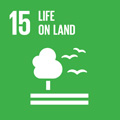- Docente: Serena Magagnoli
- Credits: 5
- SSD: AGR/11
- Language: Italian
- Moduli: Serena Magagnoli (Modulo 1) Laura Depalo (Modulo 2)
- Teaching Mode: Traditional lectures (Modulo 1) Traditional lectures (Modulo 2)
- Campus: Bologna
- Corso: First cycle degree programme (L) in Land and Agro-Forestry Technologies (cod. 5831)
-
from Feb 18, 2025 to May 06, 2025
-
from Feb 17, 2025 to May 19, 2025
Learning outcomes
At the end of the course the student will know the morphology, anatomy of insects; the biology and ethology of the main pest of different plant species and the most important beneficial insects. The student will be able to understand the agro-forestry environment in the framework of the management of insect population and plant protection.
Course contents
MODULE 1. Entomological biodiversity and elements of insect systematics (2 CFU)
1. Elements of systematics, taxonomy and evolution of insectsBiodiversity
2. Biodiversity
2.1. Entomological biodiversity
2.2. The value of biodiversity;
2.3. The importance of insects and their ecosystem services;
2.4. Insect decline;
3. Insect systematics;
3.1. «Entognatha» and the «true insects»;
3.2 Main insect orders
3.3. Key species of agro-forestry environment
MODULE 2. Biology and insect pest control methods (3 CFU)
1. General characteristics, morphology, anatomy and physiology of insects
1.1. Morphology: head, mouthparts, torax, legs and wings, abdomen and their appendixes;
1.2. Anatomy: integumental, nervous, respiratory, digestive, reproductive, exocrine and endocrine systems
1.3. Physiology: pheromones, hormones and their functions, reproduction methods, m oulting and metamorphosis, postembryonic development, diapoause, mechanisms of action of insecticides.
2. Insects and ecosystems
2.1. Agroecosystems and forestry systems;
2.2. Notes on insect population dynamics;
2.3. Insect spread and problems related to the introduction of exotic insects.
3. Protection of plants from insects in agricultural and forestry environments
3.1. Biological and microbiological control
3.2. Mechanical, physical and agronomical control.
3.3. Chemical control and side effects of pesticides
3.4. Integrated pest management
Readings/Bibliography
Gullan P.J. and Cranston P.S. 2000 - The Insects. An outline of Entomology. Blackwell Science Ltd
Teaching methods
The course consists of lectures supported by slides. The material will be made available by the professors on Virtuale.
Additional activities complementary to the lectures (practical exercises, seminars, field trips) are also planned and will be evaluated each year by the professors.
During the exam preparation, the students will be encouraged at watching the entomological boxes available at the Entomology area in a special classroom.
Assessment methods
The final exam consists of an oral test (duration: about 15-20 minutes). An integral part of the exam will be the identification of insects through photos or entomological boxes. The insects to be identified will be similar to those that students have had the opportunity to examine during lectures, practical exercises, and independently (every morning from Monday to Friday) in the Entomology Teaching Room (Viale Fanin, 42, 3rd floor).
Students can require to take the final exam in English.
Teaching tools
PC, Projector, Entomological Collection
Office hours
See the website of Serena Magagnoli
See the website of Laura Depalo
SDGs


This teaching activity contributes to the achievement of the Sustainable Development Goals of the UN 2030 Agenda.
